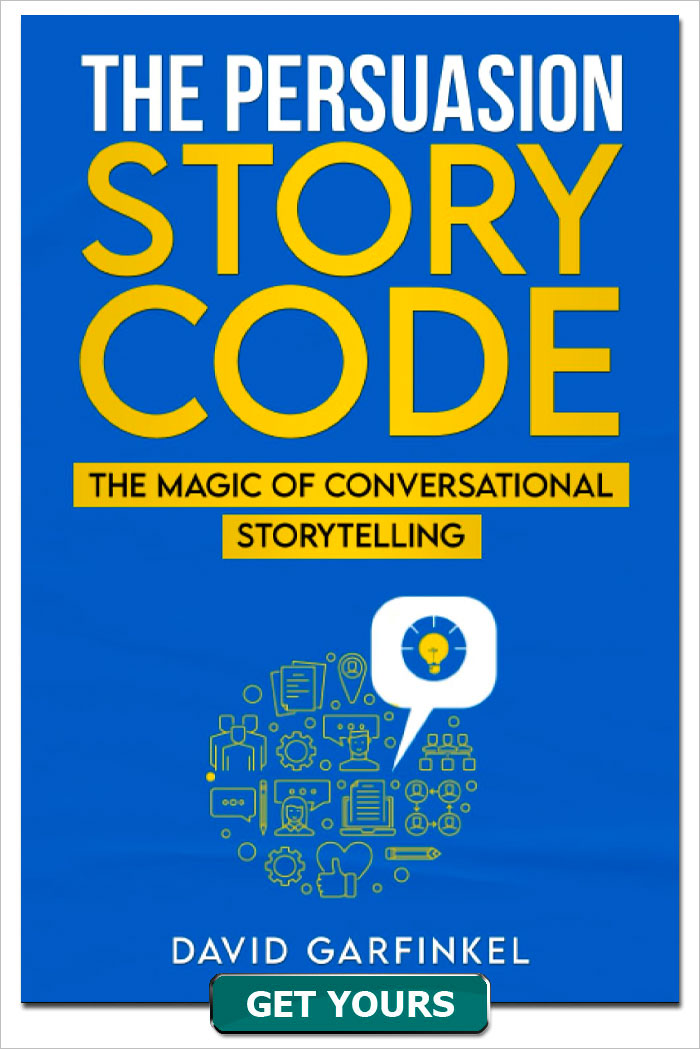Subject Matter Expert In A Hurry
Published by: David Garfinkel on 10-21-2019
Tweet
When I was but a wee lad, not even 40 years old yet, I worked in the Chicago News Bureau of McGraw-Hill as a correspondent for a number of niche business magazines. One of my most important clients was Engineering News Record, or ENR for short.
Now this was an interesting challenge, since I had trouble screwing a nut on a bolt. And I’d never taken an engineering course in my life.
I had to get up to speed super quickly on a whole range of things, to write about concrete, rebar, sheer forces, cantilevers, and all kinds of technical construction stuff that was a complete mystery to me.
I did it, and it really paid off. I became ENR’s golden boy in the field, and when the San Francisco bureau chief job opened up, they lobbied to get me in it. And, for the first time in 40 years, San Francisco’s McGraw-Hill World News office had a new bureau chief: me.
Now, the reason I’m bragging about this is to put some focus on a skill I developed that helped me get through many trials by fire. (That would be, each article I had to write for ENR.) The skill was, becoming a subject matter expert in a hurry.
I’ve used this in copywriting, too. It’s one reason I’ve done work in more than 100 different industries.
Today I’d like to share with you my step-by-step method for becoming an expert in a hurry. I’m going to share all my show notes on this episode with you on copywriterspodcast.com . So you can print them out and use them when it would be useful.
--
Now I will say that my ENR experience came in handy 30 years later. That was when Kim Phelan, who was with GKIC at the time, asked me if I would do copy critiques for for some of their members. It turned out that Kim had worked for the Association of General Contractors and they all read ENR. So we had something from our backgrounds in common.
But just as important was the way I was able to transfer the skill of becoming a subject matter expert in a hurry to any niche. I’ve been doing this on autopilot for years, but I decided to lay all the steps on the table and share them with you today.
This is important because it gives you a comfort level in a new niche, and provides a kind of road map on where to go as you do the rest of your research.
There are five things you need to become familiar with. I’m calling them “bricks” because together they form a little structure you can operate from. I guess I did learn something at ENR after all!
Brick 1. Mindset
Description/definition: The mindset is the way this market looks at things. When you’re writing for a niche or for a specific product, the first thing you need to accept is that they may not look at things the way you do, or the way a lot of other people do. Your job is to find out how they look at it.
Example (keto):
The keto mindset is: You can lose weight eating this way: By balancing healthy fats and proteins with a small amount of good carbs. With the right information and consistent action, you will succeed. With the wrong foods or the right foods in the wrong ratios, you won’t succeed. It’s possible to do, but you have to understand exactly how to do it, and then do it exactly that way.
Questions to ask to build this brick:
• What are they trying to accomplish?
• What supports them in accomplishing that?
• What keeps them from accomplishing that?
Answering these questions helps you rapidly draw a rough outline of their world.
Brick 2. Bias
Description/definition: Possibly the only source of unbiased information in the U.S. is The Weather Channel, which boasts that it is the most trusted news channel on TV. But that’s only because there’s no constituency for bad weather.
In other words, when it comes to weather, nearly everyone has the same bias. So, they pretend they’re not biased.
But the fact is, everyone is biased. It’s just human nature. It’s not necessarily a bad thing, but it is a bad thing when a copywriter doesn’t understand the bias of the market they’re writing for. Understanding it is an important part of becoming an expert in a hurry.
Example (keto): Keto is biased against traditional “food pyramid” advice as well as a lot of diet approaches that do not emphasize fats and minimize carbs. It’s not a world where “all diets are created equal, but this one might work for you.” It’s more a world where, the information you’ve been getting is wrong and could be dangerous to your health. But keto is a proven, effective path to weight loss and overall health.
Questions to ask to build this brick
• What do they focus on as true and important?
• What do they see as misleading or unimportant?
• Which people or groups do they see for them, and who do they see as against them?
Example: Construction engineers see facts, data and physics as important.
Professional motivational speakers, who I’ve worked for, see feelings and experience as important.
Both are examples of bias. Both make perfect sense for each group. Both would be ridiculous as the primary values of the other group. Engineers building skyscrapers would be nuts to focus mainly on feelings as their basis for building decision.
Motivational speakers talking to civilian audiences would be out of their mind to talk mainly about facts and data, when their job is to inspire hope. But both groups are entirely legitimate with their own biases, in the greater scheme of things.
Brick 3. Jargon
Description/definition: Jargon is the special language of a niche, market or community. People use it for at least two major reasons: To indicate they are insiders instead of outsiders, and as shorthand, to save time.
A lot of people trying to become experts in a hurry start here. It’s better than not starting anywhere at all, but you’ll be so much better off if you have a working knowledge of the mindset and the bias before you dive into the jargon. Because, for one thing, you’ll sound more like you know what you’re talking about when you use the jargon.
Example (keto): Keto has special terms of its own. The one that stands out in my mind is “the keto flu,” which is not a real flu, as best I can tell, but the body’s reaction to going into ketosis, which is part of the process of the keto diet. It feels like the flu.
“Low-carb” is a big term they use.
Also, some biochemistry terms, like MCTs (medium-chain-tricglycerides) and ketones.
That’s just a few of them.
Questions to ask to build this brick:
• What are the “official words” people in this space use?
• What are the “slang words” people in this space use?
• Are there sayings and phrases that mean one thing everywhere else, but might mean something entirely different in this space (like “keto flu”)?
Brick 4. Thought Process
Description/definition: Every market has an overriding thought process. This becomes easier to understand after you’ve become an expert in a hurry in a few different markets. Golf’s thought process is about improving the game by making each component more efficient. Copywriting’s thought process is about improving numbers through better targeting of customers, messages, and offers. Financial informations thought process is about unique, credible techniques to improve cashflow from investments. The more you can get a sense of your niche’s thought process, the better you’ll be able to write for them.
Example (keto): Keto’s thought process is basically, everything else is wrong, and keto is the way to go with your diet. It doesn’t work exactly the same for everyone, so you may need to make some adjustments. It’s based on solid science and proven to work
Questions to ask to build this brick:
• Are they more like a detective (following clues and eliminating possibilities to get to conclusions)?
• Or are they more like an inventor (trying out new ideas to find out which one works)?
• Do they have inclusive (everyone welcome) or exclusive (only the best can do this) mentality?
Brick 5. Enemies
Description/definition: Many people would like peace, love and harmony in the world, but even those people have enemies, though they’d rather not admit it. The enemies of peace, love and harmony are war, hatred, and discord. The reality of life on this planet is that everyone perceives enemies of some sort, real or imagined. Your job, as a copywriter, is to figure out who your market sees as their enemies. This can come in handy at time when you’re actually writing the copy, and it certainly will help you understand some of the things you learn along the way as you do further research.
Example (keto): Keto has many enemies. Processed food. Traditional ways of eating. Big Agriculture (because of all of the grains and other carbohydrate-rich foods they produce). Nutritionists who give advice contrary to keto. Fast food. The candy industry.
As just a few examples.
Questions to ask to build this brick:
• Who or what makes it easier for people in this world/on this path, to succeed?
• Who or what makes it harder for people in this world/on this path, to succeed?
• Who or what do people in this world think is an enemy — even if you don’t?
Okay, so that wraps up our little crash course in how to become a subject matter expert in a hurry. As a quick review, the five “bricks” are:
1. Mindset
2. Bias
3. Jargon
4. Thought process
5. Enemies
Keywords: master any niche in a hurry









